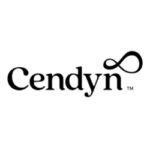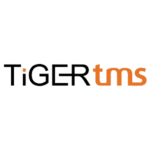 One of the bright spots for the hotel industry amid the pandemic was the ability to hold—if not drive—average daily rate, particularly in leisure-led, drive-to markets. It is something that evaded hoteliers during prior calamities, including 9/11 and the Global Financial Crisis of 2008, when hotels slashed rates in an attempt to win back demand.
One of the bright spots for the hotel industry amid the pandemic was the ability to hold—if not drive—average daily rate, particularly in leisure-led, drive-to markets. It is something that evaded hoteliers during prior calamities, including 9/11 and the Global Financial Crisis of 2008, when hotels slashed rates in an attempt to win back demand.
It proved a faulty strategy. But understandable: the knee-jerk, common-sense reaction to depletion of demand is to do whatever it takes to offset that reduction. That means filling rooms by any means and the biggest lever hoteliers have at their disposal is rate. The problem with that move is that typically when you drop rate, it takes an extended period of time to build it back up—which isn’t easy.
It’s widely held now that discounting rate to stimulate demand is not a productive move. In 2006, Cornell’s School of Hotel Administration published a seminal report that argued the point. “Why Discounting Doesn’t Work: A Hotel Pricing Update” concluded in its study that “discounting relative to the competitive set does, in fact, fill a hotel, but the study also clearly shows that hotels in direct competition make more money when they maintain their price structure and do not discount to fill rooms.”
The data was drawn between 2001 and 2003 and showed that hotels, which lowered rates, did capture market share from their competitors, but did not gain a higher RevPAR. Conversely, those with higher prices had lower occupancy but higher RevPAR.
“These results suggest a strategy of holding rates constant when competitors are discounting, or even raising prices to a small degree,” according to the study.
Consider London. According to HotStats data, the city’s hotel business, like most across the globe, fell off the table in April 2020, a simultaneous drop in occupancy and rate—hoteliers facing a predicament they likely never could have envisioned. June 2020 was the lowest rate point for the city at £62, but ascended markedly thereafter. After some normal seasonal movement, by October 2021, average daily rate was exceeding pre-pandemic levels.
Even New York, which was disproportionally victimized by the pandemic, saw its rate exceeding pre-pandemic levels by November 2021, according to HotStats data.
More occupancy, more costs
The idea of filling a hotel by any means necessary might sound like the right thing to do, but hotels that run higher occupancies also run higher costs. And if they are running higher occupancies with lower-rated business, then that is a recipe unkind to the bottom line.
Gross operating profit per available room, or GOPPAR, is a measure of a hotel’s ability to balance revenue and expense. It is the total revenue of the hotel less expenses incurred earning that revenue, divided by the number of available rooms. GOPPAR indicates how well a hotel is operated. So though more rooms occupied sounds like a great problem to have, it’s a headache, especially if they are filled at a reduced rate. In normal times, it means that those rooms need to be serviced, which means more housekeeping labor; more room products needed to be filled, which impacts guest supply costs, such as soap, shampoo, lotions, toilet paper, etc.; higher cost of sales in the F&B department; and other miscellaneous expenses.
The bottom line is that the more hotel rooms filled does not always equate into higher profit, which is what hotel owners are only interested in from an operational perspective.
GOPPAR globally continues to lag its pre-pandemic levels, according to HotStats data. As of February 2022, GOPPAR in the U.S. is still $27 off compared to the same month in 2019; it’s €22 off in Europe; and $28 off in Asia.
RevPAR v. Net RevPAR
Protecting rate is the goal of a deft hotel operator. It’s easier said than done in the face of the countless intermediaries looking to break off a piece of the pie.
With rate anchored, hoteliers will need to find ways to keep as much of a room sale in their pocket as they can in lieu of losing those precious dollars to the likes of Expedia or other commission-gobbling agents.
That’s where keeping an eye on RevPAR versus Net RevPAR comes in handy. Net RevPAR is rooms revenue minus distribution costs (travel agent commissions and other transaction fees) and divided by the number of available rooms. Unlike RevPAR, it explains the cost of the revenue obtained. As such, it’s a much more transparent metric into a hotel’s performance than RevPAR, which does not account for how the revenue was obtained.
Revenue managers worth their salt are focused on the delta between RevPAR and Net RevPAR. Simply put, the smaller the delta between RevPAR and Net RevPAR the better—indicating a hotel has either favorable negotiated OTA terms, doesn’t rely as much on intermediaries or has greater success in its overall direct-booking business.
Conversely, if a hotel’s RevPAR is appreciably higher than its Net RevPAR, it should take closer inspection at its cost of customer acquisition.
Though RevPAR was predictably lower in full-year 2021 versus full-year 2019, the delta between RevPAR and Net RevPAR was smaller. In the U.S, in 2021, it was a difference of around $3 according to HotStats data, around $4 less than compared to 2019—that’s more money saved and more profit earned. In Europe, the difference was even larger: $3 in full-year 2021 and $9 in full-year 2019.
Now, that’s a strategy worth keeping.



















